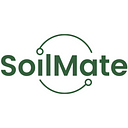How to decrease the harm of fertilizers using satellite imagery
Even though supplement usage is necessary nowadays due to the growing population, hunger in some regions and countries, and food insecurity problems, we all know it can be harmful and cause long-term crises in the future. How necessary is today’s fertilizer’s use? And how long do we have until the global soil depletion? So let’s dig into the issue.
What is the difference between fertilizers and when they can be dangerous?
Most of the fertilizer consists of an inorganic component. In terms of nutrients, fertilizers are classified into three classes. Straight fertilizers consist of a single chemical compound that performs as the principal nutrient. Complex fertilizers contain more than one nutrient. On the other hand, mixed fertilizers are a combination of simple and complex fertilizers.
Every fertilizer contains essential plant nutrients, but this composition is different for each fertilizer. And it opens up a very first challenge which leads to a well-known problem. The imbalanced availability of nutrients leads to low crop yields and can confuse nutrient production in the soil, resulting in nutrient poverty.
Nitrogen is the most affecting soil pH. nutrient, therefore it is better to be careful with the usage of Nitrogen fertilizers because the overuse quickly makes soils more acidic.
The opposite issue is the alkaline soils. Since the alkaline soil has a limited amount of nutrients, this often leads to growing stagnation.
Such alkaline fertilizers as sodium nitrate quickly develop alkalinity in soils, making them infertile.
Certainly, fertilizers can improve soil structure, nutrient content, and yields. But the usage of the extra nutrients will destroy the biological community in soils.
In excess, nitrogenous fertilizers seep through the soil into groundwater and other water sources, resulting in pollution. Nitrates also may enter groundwater. If these groundwaters are used for domestic usage, leaching is a dangerous health risk.
Overuse of phosphorus nutrients increases its concentration in water which causes algal blooms, especially in standing water. These algae can produce toxins that are toxic to animals, including humans.
All these cases are just a few common examples of daily challenges encountered by our environment. But the complexity of these issues is increasing day by day while the chances to reach a sustainable environment are rapidly falling.
If the supplements are that harmful to our environment, so why do we use them?
Farmers worldwide are used to produce more products by all means to meet the demand for food of the growing population. There is one alternative way — organic farming, but we have to sacrifice harvests for human health due to the low productivity rate for commercial growing.
The recent studies published in the journal Nature Communicators assume that large-scale application of organic farming in a specific area will increase greenhouse gas emissions mainly because crop yields will be 40 percent lower.
For that reason, even natural fertilizers can be harmful in higher regular doses.
So, they have two resolutions: switch to an organic farming system with reducing yields or increase the productivity of existing lands through fertilizer usage.
Obviously, there are plenty of downsides in both of these resolutions, and farmers are used to choosing the last one to cover the world’s population food demand.
The new solution: how satellite imagery helps to determine the amount of fertilizer?
To increase food production, farmers should know the optimal amount of fertilizer for each separate area. It is necessary to make an accurate calculation based on satellite imagery to increase yield richness and save resources.
The advent of high-performance computers and decision-making technologies, like SoilMate, has made it possible to process massive remotely-sensed or field survey data in near real-time to inform precision land management.
The technology can save up to 40% of fertilizers, so let us take a real example of fertilizer minimization on the agricultural territories of the United States.
Since the area of land resources in the USA is more than 150 million hectares (mha), the country is a successful exporter of the top three products: corn (37 mha), cotton (7 mha), and soybean (34 mha). Let’s focus on the last one.
Phosphorus fertilizer is recommended for high-yielding soybeans. For every hectare of area, it needed 260 kilograms of Phosphorus fertilizer. That way, for 1mha, the estimated amount of fertilizer is 260 000 tons, which is far more than using technologies based on satellite imagery data.
What is the interest for the global environment?
The variety of issues triggered by chemical fertilizer is mainly related to excessive use of fertilizers, which doesn’t solve the problem. Still, it even has an extra negative impact because using more than plants can help them grow harms the environment and human health.
To minimize the harmful impact without lossless in resources is necessary to implement the new technologies as decision-making tools to produce a supplements demand forecast before the crop season, instead of trying to cut off the problem with fertilizer overdosing.
